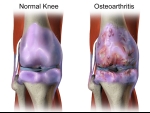Home »
Blog » Pain Management
| Stem Cell, PRP, Acupuncture in Queens & Long Island, New York
Pain Management | Stem Cell, PRP, Acupuncture in Queens & Long Island, New York
Muscle spasms are a common and often painful condition in which a muscle involuntarily contracts and tightens. These spasms can occur in various parts of the body and may be triggered by factors like overexertion, dehydration, or muscle strain. At Precision Pain Care and Rehabilitation, Dr. Jeffrey Chacko, MD specializes in interventional pain management, offering targeted treatments for muscle spasms and other musculoskeletal conditions to help patients regain their quality of life.
Read more
The sacroiliac (SI) joint, located in the lower back where the spine meets the pelvis, plays a critical role in providing stability and absorbing shock during movement. However, when this joint becomes irritated or inflamed, it can lead to a condition known as sacroiliac joint dysfunction (SIJD), causing significant discomfort and impacting one's quality of life.
Read more
At Precision Pain Care and Rehabilitation, we understand how debilitating a spinal sprain or strain can be. These conditions, which can affect the cervical (neck), thoracic (mid-back), or lumbar (lower back) regions, often lead to significant pain and limit one’s ability to perform daily activities. As an interventional pain management specialist, I, Dr. Jeffery Chacko, MD, am here to provide you with insights into the nature of these injuries, and how interventional pain management can effectively help you find relief and regain mobility.
Read more
Vertebral Compression Fractures (VCFs) are a common yet often under-recognized source of back pain and discomfort, especially in older adults. These fractures can severely impact quality of life, causing pain, reduced mobility, and decreased daily activities. At Precision Pain Care and Rehabilitation, we provide comprehensive care for patients with VCFs,
Read more
Smooth knee movement can be affected by this condition. Please find out more about what it means and how to treat it. Knee movement is typically smooth, with the kneecap (patella) gliding within a V-shaped groove at the end of the thigh bone, called the trochlea. This stable movement allows you to stand, walk, and run without issues as the patella moves up and down as you bend and straighten your knee.
Read more
Golf caters to the senior player more than any other sport. There is no age limit, and the handicap system allows an ongoing and organized competition. A good thing, since the population is aging, with nearly twenty percent of Americans - or sixty million people - over the age of 65. Contrary to Mickey Mantle’s observation, “If I had known I was going to live so long, I would have taken better care of myself,” most people today are well nourished, more active, and generally committed to keeping their health in order.
Read more
Low Back Pain in Golfers: Causes and Prevention - Low back pain is a significant concern for many golfers during and after play. This common condition affects both athletes and non-athletes, impacting enjoyment and, in severe cases, leading to pain and disability. Understanding the causes of low back pain is crucial for prevention.
Read more
Osteoarthritis (OA) is a condition caused by the gradual wear and tear of joints over time. Multiple factors, including genetics, may increase your likelihood of developing this progressive disease. Osteoarthritis affects over 32.5 million adults in the United States and is the most common form of arthritis, particularly in older adults. It’s also a leading cause of disability. If OA runs in your family, you may be at a higher risk of developing it.
Read more
Knee osteoarthritis (OA) is a common condition that results in knee pain, inflammation, and stiffness. Various treatments are available, from heat and cold therapy, gentle exercises, and physical activity to medications and surgical interventions. Osteoarthritis affects the cartilage in joints and is the most common type of arthritis, impacting approximately 32.5 million people in the United States. The knee is particularly vulnerable to OA, making everyday tasks like walking, climbing stairs, and performing routine activities difficult.
Read more
Osteoarthritis can lead to joint pain and stiffness. Medications, lifestyle changes, and surgery may help reduce pain and inflammation. Osteoarthritis is a degenerative joint disease resulting in inflammation, stiffness, and pain. It’s the most common type of arthritis, affecting about 32.5 million people in the United States. As the disease progresses, osteoarthritis can limit mobility and decrease quality of life. However, treatment can slow its advancement.
Read more
Love this Post? Spread the World
























